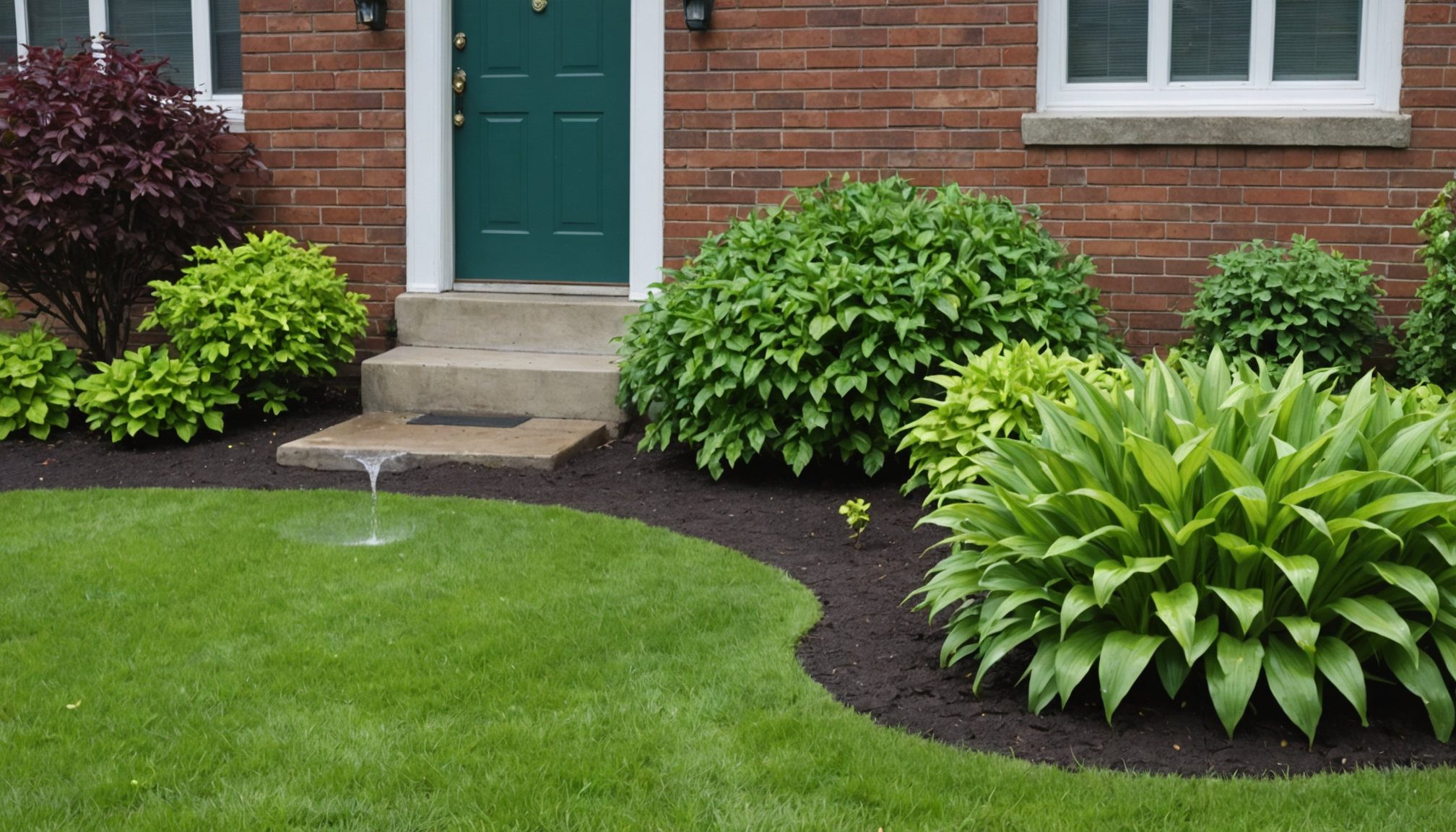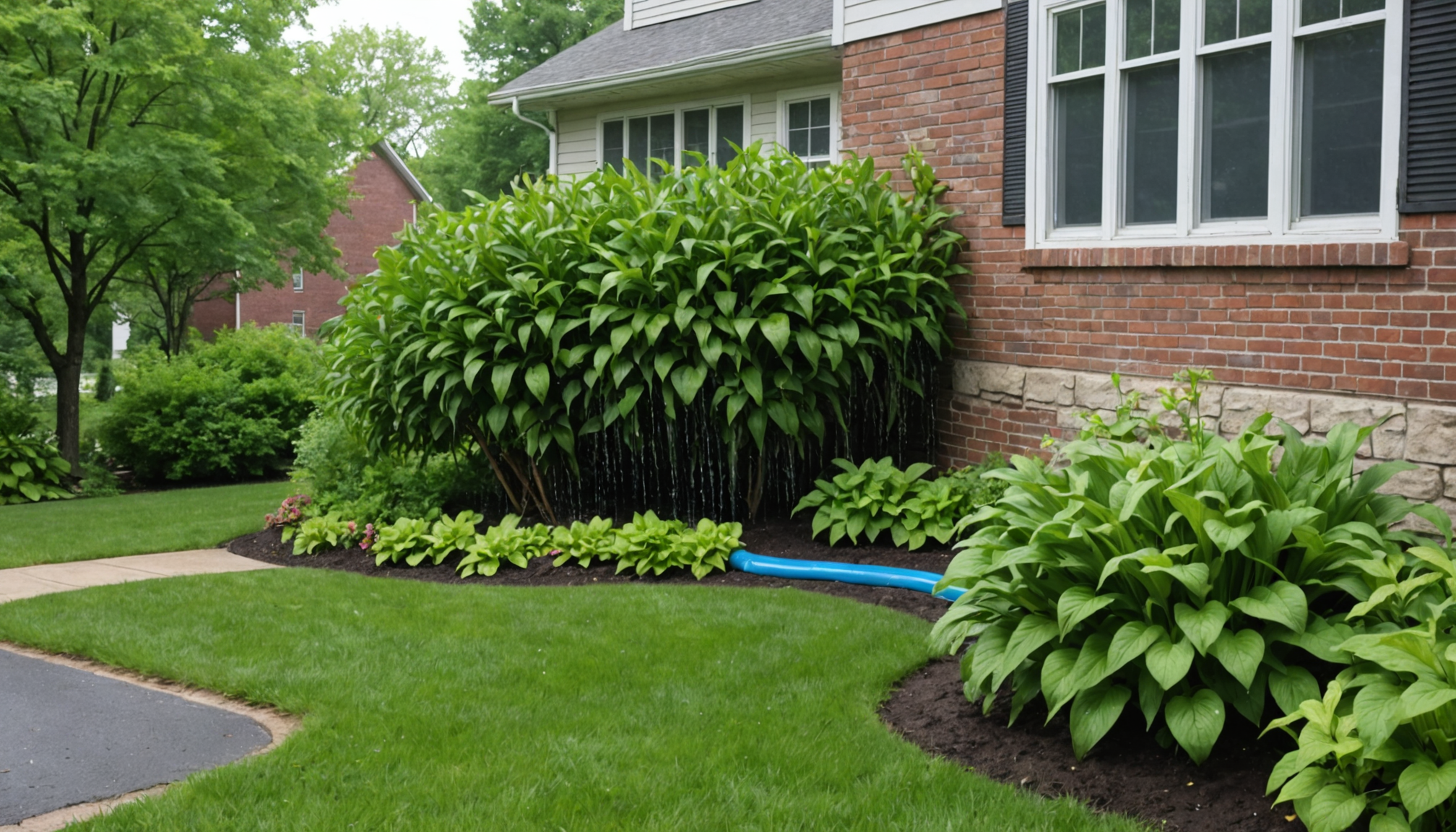St. Louis, known for its dynamic and often unpredictable climate, presents unique challenges for homeowners, particularly when it comes to managing water drainage away from the home. Situated in the heart of the Midwest, the city experiences a wide range of weather conditions due to its location at the confluence of the Mississippi and Missouri rivers. This geographical setting results in varied weather patterns, including heavy rainfall, intense thunderstorms, and even severe winter conditions. Such diverse weather scenarios underscore the importance of selecting the appropriate downspout extensions that can effectively manage these challenges.
Heavy rainfall is a common occurrence in St. Louis, especially during the spring and summer months. Data from the National Weather Service indicates that the city receives an average annual rainfall of around 41 inches, with peak precipitation often occurring in May and June. During these times, the capacity of gutters and downspouts is put to the test. Inadequate drainage systems can lead to water pooling around the foundation, which may cause significant damage over time. Effective downspout extensions are crucial in redirecting water safely away from the home, mitigating the risk of basement flooding and foundation issues.
Furthermore, St. Louis experiences fluctuating temperatures throughout the year, which can impact the integrity and performance of downspout systems. Winters can be harsh, with temperatures frequently dropping below freezing. The freezing and thawing cycle can cause expansion and contraction of materials, leading to cracks or damage in downspouts and extensions. These conditions highlight the need for durable materials that can withstand the temperature extremes while maintaining functionality. Homeowners must consider weather-resistant and flexible materials that remain reliable throughout the year to ensure efficient drainage and long-term protection for their property.
materials and durability
When selecting materials for downspout extensions in St. Louis, homeowners must prioritize durability to ensure long-lasting performance under the city’s diverse weather conditions. Given the variable climate, the choice of material plays a critical role in the system’s ability to withstand weather extremes and maintain effective drainage.
Metal, particularly aluminum, is a popular choice for downspout extensions because of its ability to resist corrosion and handle temperature fluctuations, such as those experienced in St. Louis. Aluminum is lightweight yet strong, making it an excellent option for homeowners who need a material that will not succumb easily to the pressures of both intense summer heat and the biting cold of winter. However, it’s essential to select aluminum that has been treated with a weather-resistant coating to prevent potential oxidation over time.
Another durable option is vinyl, which offers a cost-effective and weather-resistant alternative for homeowners. Vinyl downspout extensions are particularly valued for their flexibility and ease of installation, allowing them to move slightly with the freeze-thaw cycles that often occur in St. Louis winters. Vinyl is resistant to rust and corrosion, and it typically doesn’t require painting, which reduces maintenance efforts over time. However, it’s crucial to ensure that the vinyl used is of high quality to prevent cracking or brittleness in colder temperatures.
For homeowners seeking natural aesthetic appeal, copper downspouts offer both durability and beauty. Copper is highly resistant to corrosion and doesn’t require additional coatings to withstand the elements, making it suitable for long-term use in varying St. Louis climates. While copper can be more expensive upfront, its longevity and minimal maintenance can offset the initial investment over time.
When considering the longevity and durability of materials, homeowners should also think about potential additional features that enhance durability, such as UV protection and resistance to physical damage, which are particularly relevant given St. Louis’s occasional severe weather. Investing in robust downspout extension systems made from these resilient materials ensures consistent, effective drainage and reduces the risk of water damage to the property.
- Aluminum downspout extensions are lightweight and resist corrosion, making them suitable for extreme temperature changes.
- Vinyl is a cost-effective, rust-resistant option that accommodates freeze-thaw cycles but should be high quality to prevent cracking.
- Copper offers long-term durability and natural beauty, though it incurs a higher initial cost.
- Consider weather-resistant coatings for added protection against St. Louis’s varied climate conditions.
- Choosing materials with built-in UV protection can enhance the longevity of downspout extensions.
installation techniques
When it comes to successfully installing downspout extensions, avoiding common mistakes ensures effective drainage and prolongs the life of both your gutters and downspouts. A frequent error is improper measurement and placement of the extension, which can severely limit its effectiveness. To mitigate this, it’s crucial first to assess the slope of your yard. The extension should direct water at a downward angle, moving it at least six to ten feet away from the house foundation to prevent pooling and possible water damage. Using a level can help confirm that the installation maintains the correct gradient.
Securing the downspout into place is another area where mistakes often occur. Loose or improperly attached extensions may shift or become dislodged during heavy rain or wind. Homeowners should ensure secure attachment by using the appropriate connectors or clamps, specifically designed to fit their particular downspout and extension materials. This not only stabilizes the extension but also prevents leaks at the junction point, ensuring consistent water flow. Furthermore, regular checks should be scheduled to tighten any loose connectors and maintain a stable setup.
Another challenge is failing to account for potential clogs within the drainage system. St. Louis’s varying climate means debris can accumulate quickly, especially during the fall when leaves are abundant. To preemptively tackle this, consider installing leaf guards or screens on gutters to reduce the amount of debris. Additionally, ensuring that the extension’s outlet is clear and unobstructed is vital for preventing backups that could lead to water overflow and damage.
Homeowners are sometimes tempted to cut corners with materials, opting for cheaper, less durable options. Sturdier materials such as aluminum or high-quality vinyl are recommended for their longevity and ability to withstand St. Louis’s harsh weather conditions. Investing in durable materials from the start will prevent frequent replacements and ensure your drainage system operates smoothly year-round.
Finally, addressing aesthetics should not be overlooked. Extensions should blend seamlessly with your home’s exterior while serving their functional purpose. Options like painting the extensions to match your home’s color scheme or selecting materials that complement landscaping can keep your property visually appealing. Correct installation practices coupled with regular maintenance will not only enhance your home’s appearance but also protect it from water-related issues, proving that attention to detail in this step is critical in ensuring both the effectiveness and longevity of your drainage system.
maintenance and longevity
Proper care and regular attention are vital to maximize the lifespan and effectiveness of your downspout extensions in St. Louis. The unique climate presents challenges that could impact the performance of these systems, making routine maintenance a priority for homeowners.
Start by scheduling regular inspections throughout the year, with increased frequency during the fall and spring when debris accumulation is most prevalent. Leaves, twigs, and other debris can easily clog gutters and downspouts, particularly in St. Louis with its rapidly changing weather. By keeping these channels clear, you ensure a free flow of water away from your home, preventing potential damage from backups and overflows.
Another critical maintenance task is to check for physical damage. Given the freezing and thawing cycles and occasional severe weather in St. Louis, it’s essential to look for cracks, splits, or any signs of wear and tear in the extensions. These inspections should also include an examination of connections between downspouts and extensions. Any loose connections need to be promptly addressed to prevent them from becoming potential sites for leaks or misaligned flows, which could compromise the effective drainage system.
Homeowners should also consider making enhancements to extend the longevity of their installations. Adding components like splash blocks can further direct water flow and help disperse it into the ground, minimizing erosion and maintaining the beauty of your garden or yard. For those with larger properties or more complex drainage needs, researching more sophisticated options like underground drainage systems could offer additional benefits.
Products such as UV-resistant sprays can also be applied to those materials more prone to sun damage, ensuring they remain robust and functional between seasons. Applying a protective coating can safeguard vinyl or other susceptible materials from the harsh summer sun, adding years to their lifespan.
Finally, remember that professional help is always an option if DIY maintenance becomes overwhelming. Professional exams by local contractors familiar with the St. Louis climate can offer peace of mind and detect issues early, often at a fraction of the cost of potential repairs for damage left unchecked.
Take these steps as investments in your home’s future, ensuring it remains protected from the unpredictable elements. Proactive maintenance not only extends the effective life of your drainage solutions but also minimizes potential damage, leaving you with the peace and satisfaction that your home is secure, no matter what the St. Louis climate throws your way.
best brands and models
- What are the best brands for downspout extensions in St. Louis?
- Some popular brands known for their durability and performance in St. Louis’s diverse climate include Flex-Drain, Amerimax, and Greenworks. These brands offer a range of materials and features tailored to handle various weather patterns effectively.
- Can I install a downspout extension myself, or do I need a professional?
- With the right tools and guidance, many homeowners can install downspout extensions themselves. However, if you’re unsure about the installation process or want to ensure optimal performance, hiring a professional can provide peace of mind and prevent potential issues.
- How do I maintain my downspout extensions to ensure they last?
- Regular cleaning to remove debris and inspecting for damage or loose connections will aid longevity. In St. Louis, where weather can be unpredictable, proactive checks and small repairs can prevent larger issues and keep your gutters and downspouts functioning properly.
- How do I choose the right downspout extension material?
- Consider the local climate first. In St. Louis, materials like aluminum, vinyl, and copper are preferred due to their resistance to weather extremes and durable nature. Evaluate your budget and aesthetic preferences, alongside material properties, to make an informed decision.
- Will downspout extensions affect the appearance of my home?
- Downspout extensions can blend seamlessly with your home’s exterior if carefully chosen. Many brands offer color options and designs that can complement your home, while functional elements like splash blocks can even add a decorative touch to your drainage setup.

